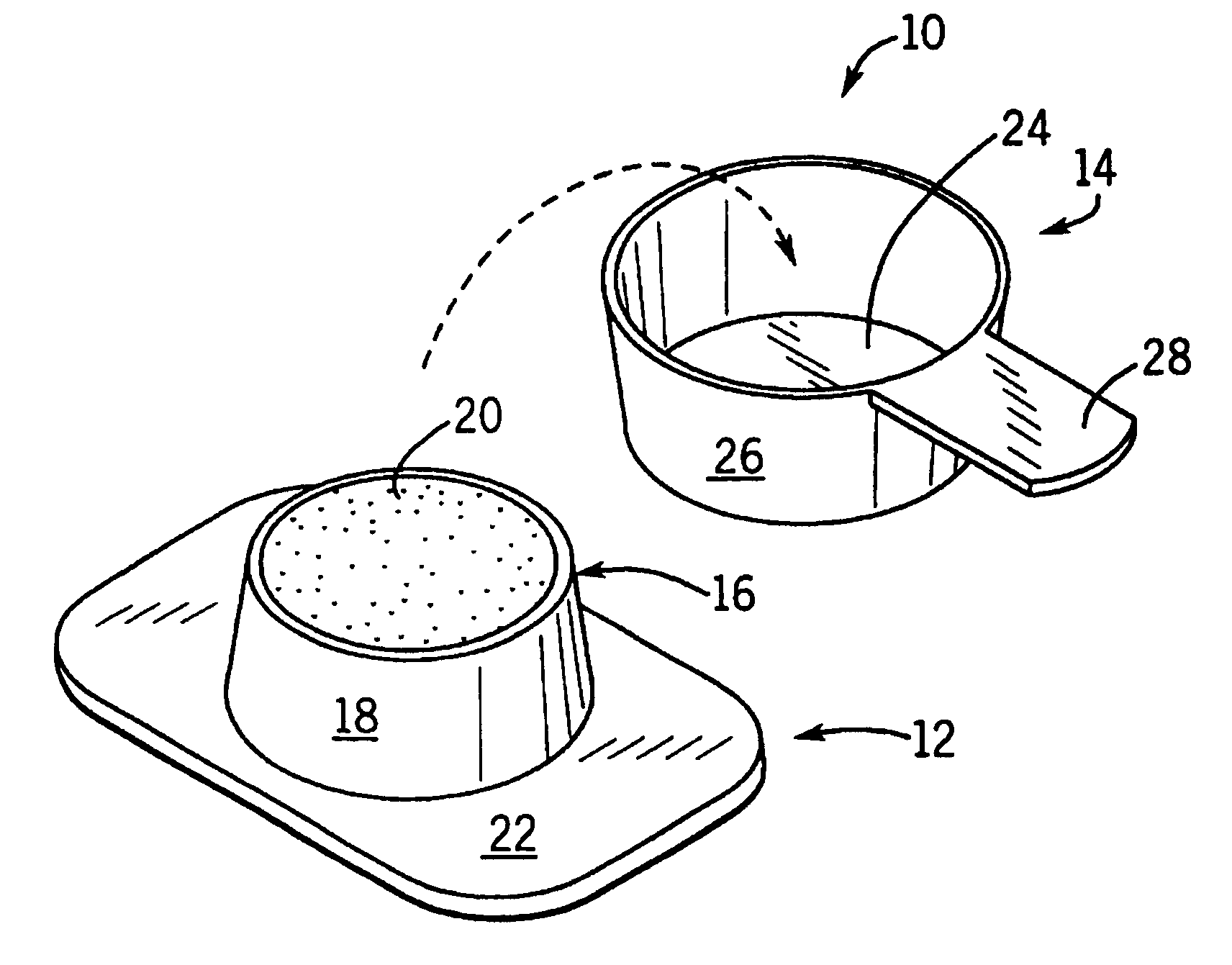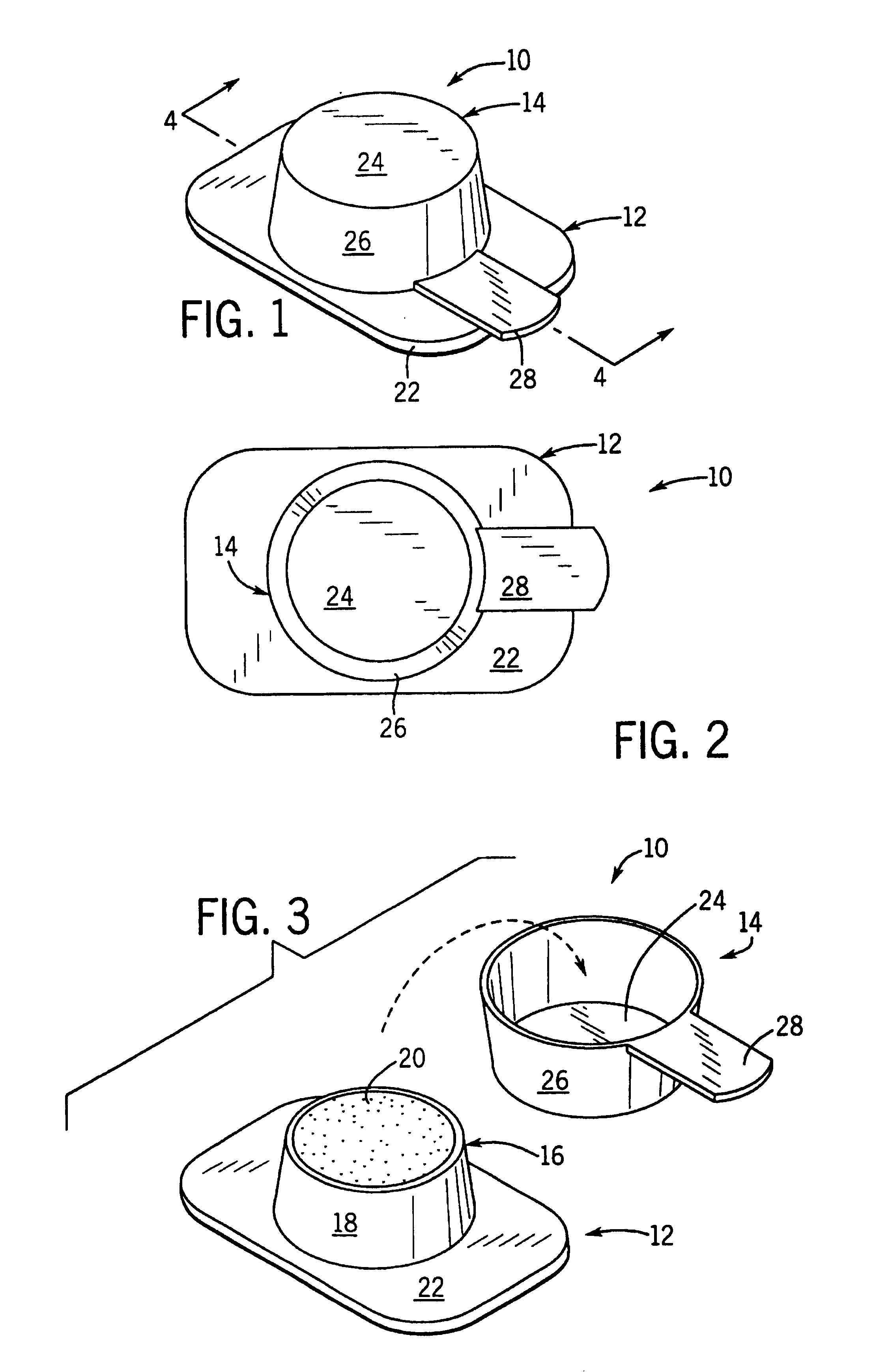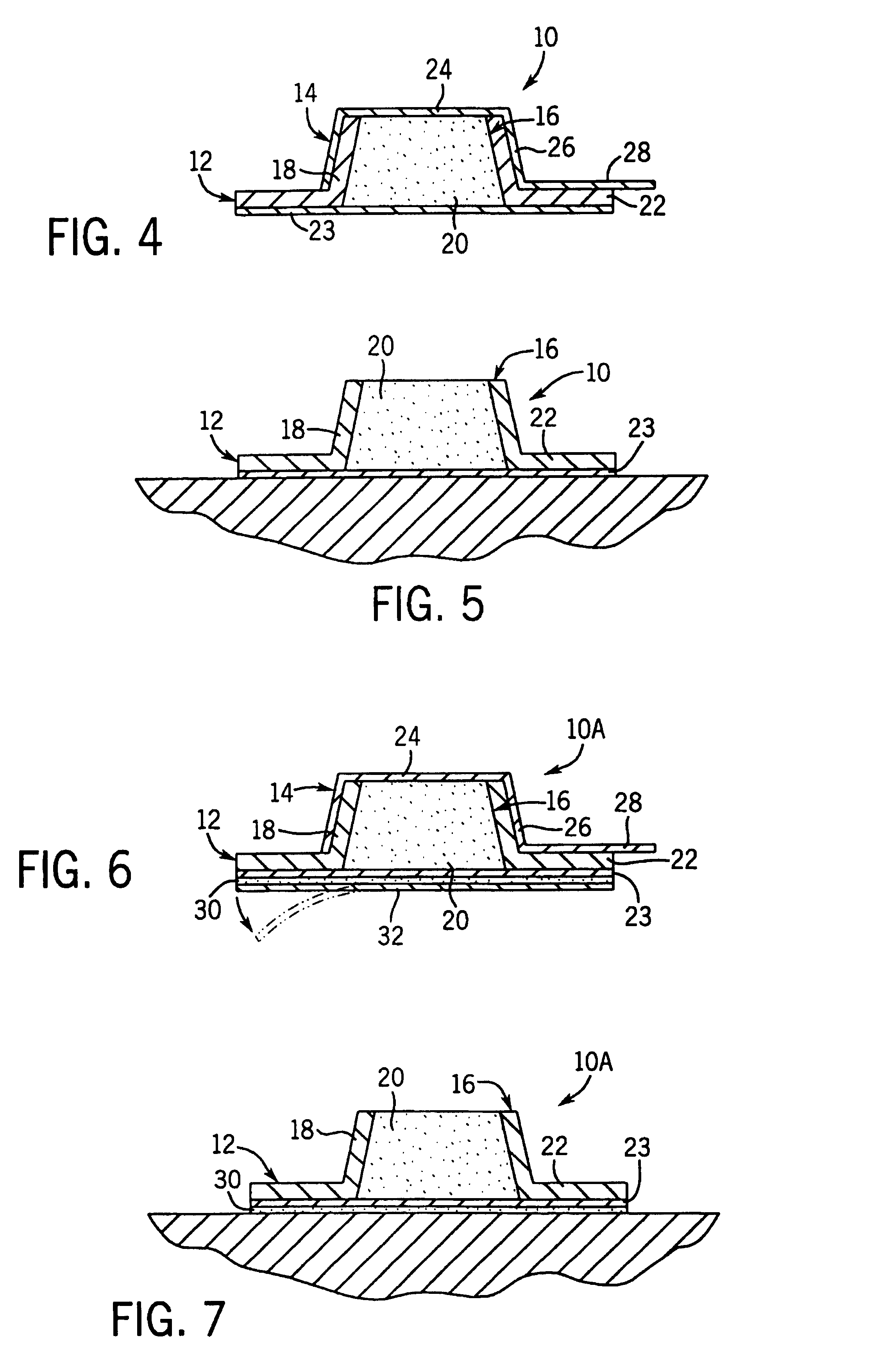Packaged rodenticide
a rodenticide and packaging technology, applied in the field of packaged animal poisons, can solve the problems of difficult hiding, consumer or business will not typically want to disclose to visitors or customers, and animals may eat much more bait, so as to achieve the effect of easy movemen
- Summary
- Abstract
- Description
- Claims
- Application Information
AI Technical Summary
Benefits of technology
Problems solved by technology
Method used
Image
Examples
Embodiment Construction
[0031]Turning first to FIGS. 1-4, there is shown a rodenticidal package, generally 10, in accordance with the present invention. The package 10 includes a base / housing 12 and a removable cover 14. The base 12 has a central cavity 16, preferably tapering towards the opening at the top. As shown, the cavity may have a frusto-conical wall 18 which the rodenticide / bait / binder mix 20 adheres to.
[0032]A planar bottom 22 extends laterally outward from the cavity 16, preferably in both lateral directions. The elongated bottom 22 provides areas for a user to handle the device 10 without touching adjacent the rodenticide material 20. The bottom 22 may be multi-layer at certain portions such as shown by a paper backing 23 at its underside.
[0033]The cover 14 has an inverted cup-shape with a top 24 and a frusto-conical wall 26 defining an inverted recess sized to receive and fit snugly onto the base portion 18. A tab-like handle 28 preferably extends radially outward from the bottom of the wall ...
PUM
| Property | Measurement | Unit |
|---|---|---|
| time delay | aaaaa | aaaaa |
| concentration | aaaaa | aaaaa |
| areas | aaaaa | aaaaa |
Abstract
Description
Claims
Application Information
 Login to View More
Login to View More - R&D
- Intellectual Property
- Life Sciences
- Materials
- Tech Scout
- Unparalleled Data Quality
- Higher Quality Content
- 60% Fewer Hallucinations
Browse by: Latest US Patents, China's latest patents, Technical Efficacy Thesaurus, Application Domain, Technology Topic, Popular Technical Reports.
© 2025 PatSnap. All rights reserved.Legal|Privacy policy|Modern Slavery Act Transparency Statement|Sitemap|About US| Contact US: help@patsnap.com



